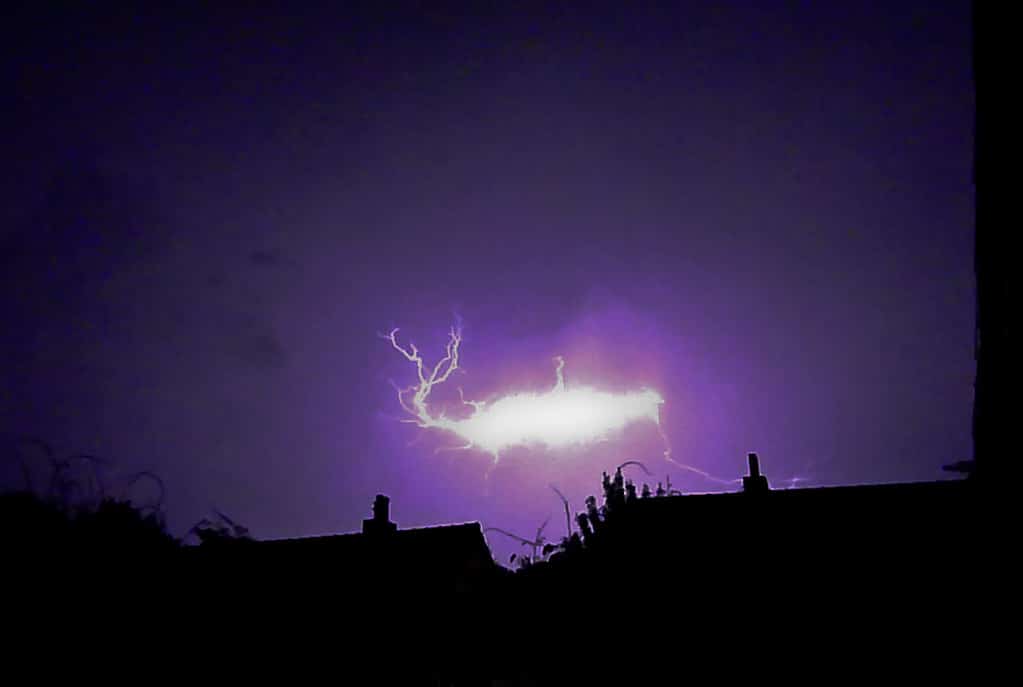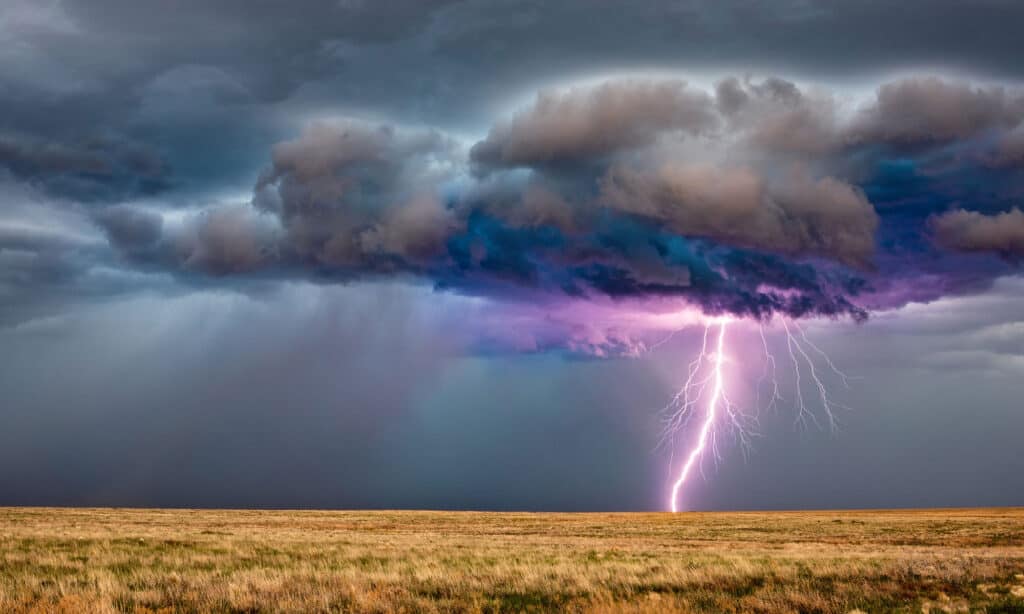Just How Hot Is Lightning in Fahrenheit?
When we see a flash of lightning, it’s easy to just think of it as a quick light show put on by nature. However there’s much more to it than meets the eye. Behind that fleeting burst of light is a tale of incredible heat, powerful energy, and the roaring thunder that echoes long after the flash is gone. In this blog, we’ll dig deeper into the world of lightning, uncovering the facts that make it one of nature’s most intriguing and powerful wonders.
Understanding the Basics of Lightning
Lightning is a powerful electrical discharge created by imbalances between storm clouds and the ground or within the clouds themselves. It’s one of nature’s most striking displays, instantly illuminating its surroundings and often followed by thunder. Within storm clouds, different particles, like ice and water droplets, move around due to turbulent air currents. As they collide, they produce electrical charges. Eventually, parts of the cloud become positively charged, while others become negatively charged. When the charge buildup becomes significant, it seeks to equalize, leading to a bolt of lightning as the electrical energy is discharged. This can happen within the cloud, between clouds, or between the cloud and the ground.

©Creative Commons – License
The Temperature of Lightning Strikes
It’s somewhat counterintuitive to think of electrical charges having a “temperature.” Yet, the resistance encountered by the surging electrical charges in lightning produces extreme heat in the materials it interacts with. For perspective, consider molten metals. Metals like iron melt at temperatures around 2,800 degrees Fahrenheit. Silver, used in many electrical applications for its high conductivity, melts at just over 1,700 degrees Fahrenheit. The air, when acted upon by lightning, dwarfs these figures. Lightning can heat the air around it to an astounding 53,500 degrees Fahrenheit. That’s more than five times hotter than the surface of the sun, which sits at about 10,000 degrees Fahrenheit.

©mbolina/ via Getty Images
Measuring the temperature of something as transient and powerful as lightning is no simple task. Modern techniques often employ high-speed cameras paired with spectral analysis. By examining the light emitted from the lightning bolt across various wavelengths, scientists can deduce its temperature.
The Thunderous Result of Lightning’s Heat
When a bolt of lightning pierces the sky, it’s not only the electric spectacle that grabs our attention but also the ensuing roar of thunder. What connects these two phenomena, and why do we often notice a delay between seeing the lightning and hearing its sound?
Rapid Expansion of Air and the Creation of Thunder
A lightning bolts temperature, which can rise to around 53,500 degrees Fahrenheit, is a major player in the drama of thunder creation. This abrupt surge in temperature causes the neighboring air to expand explosively. This expansion generates a shock wave that echoes through the atmosphere, manifesting as the sound of thunder. In essence, what we hear is the atmosphere’s reaction to the rapid and extreme heating caused by lightning.
However, the consequences of lightning’s heat don’t stop at the creation of thunder. Air, despite its seemingly intangible nature, reacts quite dramatically to lightning. Due to its properties as a poor conductor of electricity, air heats up significantly when a lightning bolt courses through it. This intense heat can wreak havoc on objects in its vicinity. Trees, with their internal moisture, are particularly vulnerable. The immense heat from lightning can swiftly convert the water inside a tree into steam, leading to rapid expansion. The outcomes can be as minor as trees having strips of bark being blown away or as severe as the tree exploding or splitting in half. Such instances underscore the raw power of nature and the profound impacts of lightning’s heat.
The Role of Distance in Sound and Sight Delays
The interval between the visual display of lightning and the auditory resonance of thunder can be attributed to the differing speeds of light and sound. Light’s speed, approximately 186,282 miles per second, vastly outpaces that of sound, which moves at about 1,125 feet per second in air. As a result, even if a lightning strike occurs several miles away, its light reaches our eyes almost instantaneously. Sound, on the other hand, lags behind. A handy way to approximate a storm’s distance is to count the seconds between seeing the lightning and hearing the thunder. For every 5 seconds of delay, the storm is roughly one mile away. This not only reveals the magnitude of the forces at play but also offers a practical method to gauge a storm’s proximity.
The Impact on Objects and Nature
Lightning’s power is not confined to the brilliant flash in the sky or the echoing thunder; its effects on the environment, both immediate and long-term, can be profound. From splintered trees to ignited wildfires, the force of a lightning strike bears witness to nature’s raw and unpredictable energy.
Immediate Effects on Trees, Buildings, and Structures
Trees, given their height and water content, are frequent targets for lightning. When struck, the rapid heating caused by the bolt can vaporize the water within the tree almost instantly. This sudden conversion to steam can lead to various outcomes, ranging from the stripping of bark to more dramatic reactions like the tree splitting apart or even exploding from the internal pressure.

©USO/iStock via Getty Images
Buildings, monuments, and other tall structures often stand vulnerable to lightning’s powerful discharges. Modern edifices typically incorporate lightning rods or protection systems to safely channel the electrical energy into the ground. However, structures without these preventive measures can experience a range of consequences. A direct lightning strike can result in electrical fires, damage to electronic systems, or compromise the integrity of structural components. In many cases, the electrical surge can travel through wiring or plumbing, affecting appliances or utilities throughout the building.
Lightning and Wildfires
While lightning is a natural occurrence, its potential to cause widespread damage is evident in its ability to ignite wildfires. Dry vegetation is particularly vulnerable. When lightning strikes an area with parched grasses or trees, it can quickly kindle a fire. Under the right conditions, especially in regions with dry winds and low humidity, these fires can spread rapidly, consuming vast areas of land and posing significant challenges to containment efforts.
Safety Tips: Respecting the Power of Lightning
Lightning, with its spectacular display and powerful energy, commands respect. It’s crucial to understand the facts surrounding this natural phenomenon and to separate myths from reality. Even more essential is knowing how to protect oneself during a thunderstorm, whether indoors or outdoors.
Myths vs. Facts About Lightning
Misinformation and myths about lightning have circulated for centuries. It’s time to set the record straight.
| Myth | Fact |
|---|---|
| Lightning never strikes the same place twice. | Lightning can and does strike the same location multiple times, especially tall structures. |
| Rubber shoes will insulate you from lightning. | While rubber is an insulator, the thin layer on shoes isn’t enough to protect from a direct strike. |
| Lightning only strikes during a heavy storm. | Lightning can strike before rain reaches the ground or even after a storm seems to have passed. |
Staying Safe During Thunderstorms
Thunderstorms, though awe-inspiring, come with their share of risks. Being knowledgeable and cautious can make all the difference.
Indoor Safety Tips:
- Avoid Electrical Equipment and Outlets: Lightning can cause electrical surges, so unplug appliances and avoid using wired devices.
- Stay Away from Windows and Doors: These can provide pathways for lightning to enter.
- Avoid Water: Lightning can travel through plumbing. It’s best to avoid taking showers, baths, or washing hands during a storm.
- Use Corded Phones Sparingly: Corded phones can conduct electricity. Opt for cordless or mobile phones.

©iStock.com/mdesigner125
Outdoor Safety Tips:
- Seek Shelter Immediately: If you’re caught outside, find a secure building or vehicle to take refuge.
- Avoid Tall Objects: Trees, poles, and other tall structures can attract lightning.
- Stay Away from Water: Bodies of water can conduct electricity. Avoid lakes, rivers, and pools.
- Steer Clear of Open Fields: Being the tallest object in an open field increases the risk of being struck.
The 30-30 Rule and Other Guidelines
The 30-30 rule is a simple method to gauge the proximity of a thunderstorm. After seeing a lightning flash, start counting seconds. If you hear thunder before reaching 30 seconds, the storm is close enough to pose a threat, and it’s time to seek shelter. After the storm, wait at least 30 minutes from the last thunder before venturing outside again.









